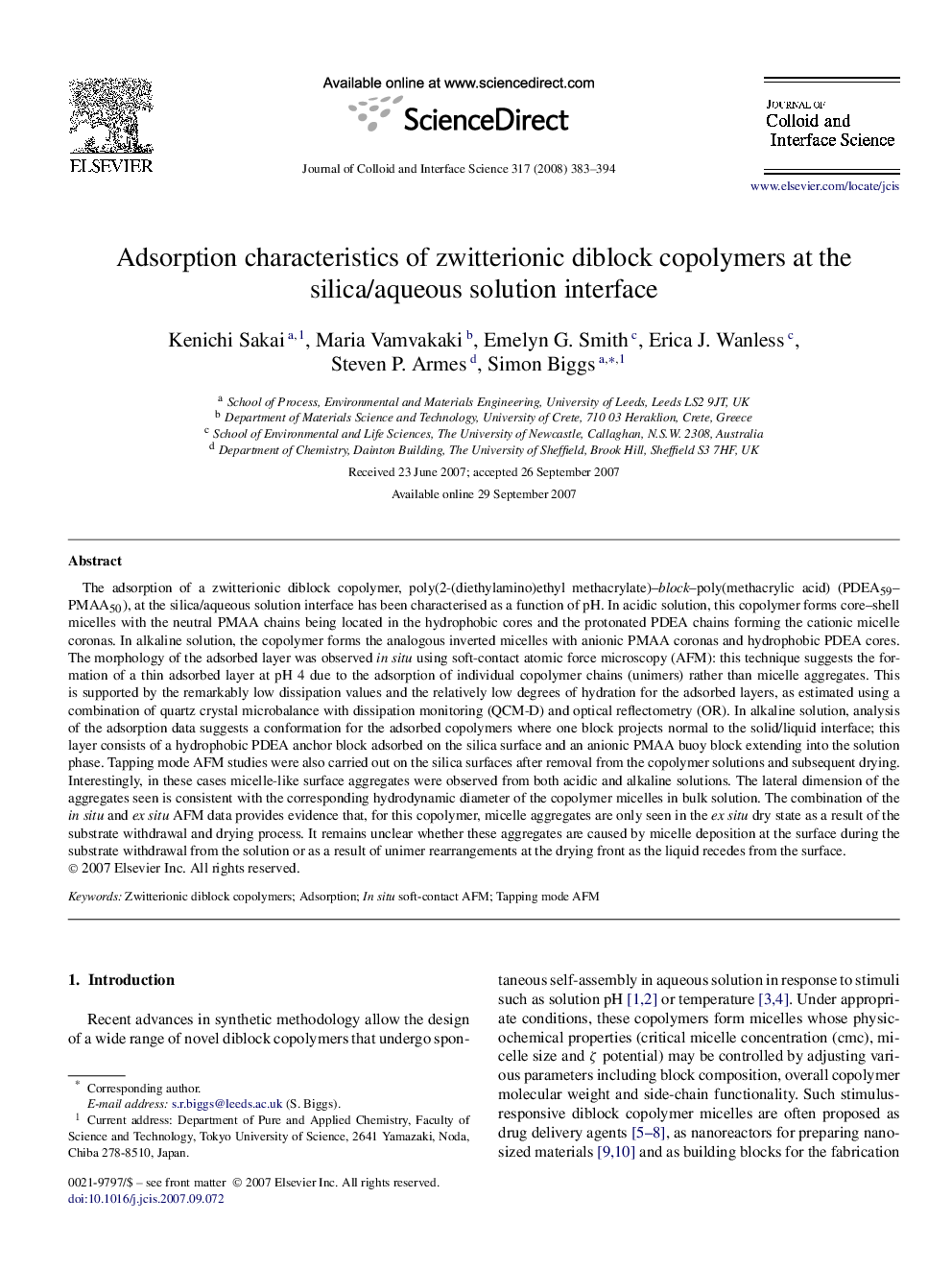| Article ID | Journal | Published Year | Pages | File Type |
|---|---|---|---|---|
| 611738 | Journal of Colloid and Interface Science | 2008 | 12 Pages |
The adsorption of a zwitterionic diblock copolymer, poly(2-(diethylamino)ethyl methacrylate)–block–poly(methacrylic acid) (PDEA59–PMAA50), at the silica/aqueous solution interface has been characterised as a function of pH. In acidic solution, this copolymer forms core–shell micelles with the neutral PMAA chains being located in the hydrophobic cores and the protonated PDEA chains forming the cationic micelle coronas. In alkaline solution, the copolymer forms the analogous inverted micelles with anionic PMAA coronas and hydrophobic PDEA cores. The morphology of the adsorbed layer was observed in situ using soft-contact atomic force microscopy (AFM): this technique suggests the formation of a thin adsorbed layer at pH 4 due to the adsorption of individual copolymer chains (unimers) rather than micelle aggregates. This is supported by the remarkably low dissipation values and the relatively low degrees of hydration for the adsorbed layers, as estimated using a combination of quartz crystal microbalance with dissipation monitoring (QCM-D) and optical reflectometry (OR). In alkaline solution, analysis of the adsorption data suggests a conformation for the adsorbed copolymers where one block projects normal to the solid/liquid interface; this layer consists of a hydrophobic PDEA anchor block adsorbed on the silica surface and an anionic PMAA buoy block extending into the solution phase. Tapping mode AFM studies were also carried out on the silica surfaces after removal from the copolymer solutions and subsequent drying. Interestingly, in these cases micelle-like surface aggregates were observed from both acidic and alkaline solutions. The lateral dimension of the aggregates seen is consistent with the corresponding hydrodynamic diameter of the copolymer micelles in bulk solution. The combination of the in situ and ex situ AFM data provides evidence that, for this copolymer, micelle aggregates are only seen in the ex situ dry state as a result of the substrate withdrawal and drying process. It remains unclear whether these aggregates are caused by micelle deposition at the surface during the substrate withdrawal from the solution or as a result of unimer rearrangements at the drying front as the liquid recedes from the surface.
Graphical abstractThe adsorption of a zwitterionic diblock copolymer, poly(2-(diethylamino)ethyl methacrylate)–block–poly(methacrylic acid) (PDEA–PMAA), at the silica/aqueous solution interface has been characterised as a function of pH.Figure optionsDownload full-size imageDownload as PowerPoint slide
